Forgotten Newton Arts and Crafts school's story revealed
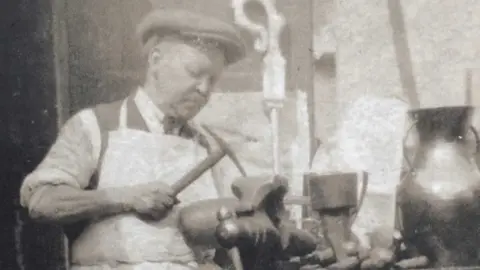 Pluck family
Pluck family The discovery of a candlestick by an antiques dealer has revealed the story of a forgotten Arts and Craft school.
The Newton School of Metalwork was a successful enterprise in Cambridgeshire from 1890 until World War Two.
Dave Marshall was put in touch with Bob Pluck, great-nephew of the school's only employee Albert Prime, while researching the candlestick's history.
To his amazement he found Mr Pluck had a "goldmine" of information, including photographs and more than 700 designs.
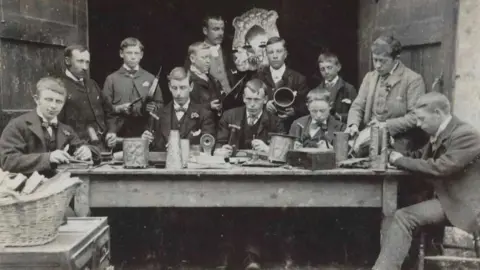 Pluck family
Pluck family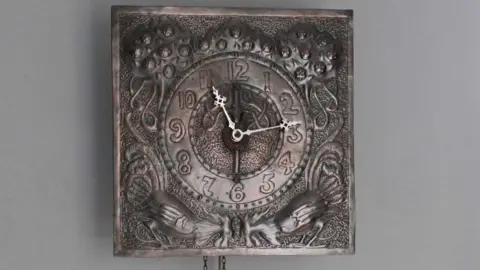 Dave Marshall
Dave MarshallMr Marshall, who is a specialist dealer in Arts and Crafts artefacts, said the candlestick - one of a pair of flat-backed candlesticks known as chamber sticks - had a sticker on its back revealing it was made by Albert Prime at Newton.
He said he got in touch with Mr Pluck in 2020 "and it turned out he was sitting on a goldmine".
"Many years after the workshops fell into disrepair, he'd gathered up all the photographs, registers and an archive of more than 700 hand-drawn designs produced for and used by the school."
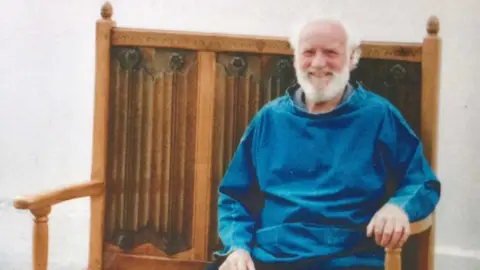 Pluck family
Pluck familyMr Marshall has bought - or been loaned - 47 objects made by the Newton school which have gone on display at David Parr House in Cambridge.
He was able to verify the unmarked pieces using the designs and photographs saved by Mr Pluck.
Mr Marshall said: "Sadly, Bob passed away in 2021, but he really wanted to share this information with someone who would pass on the history of the school."
 Dave Marshall
Dave Marshall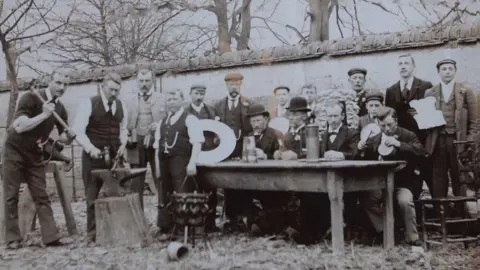 Pluck family
Pluck family It was founded at Newton, near Cambridge, by Harrold Hurrell and Eliza Nash, as part of the Home Arts and Industries Association which sought to revive rural craft.
Mr Hurrell's family owned the local estate and the school was designed to give agricultural workers training and employment during the winter months, when there was less farm work.
"Within five years they were exhibiting in London and they won a commission from the Prince of Wales [later Edward VII], which is not bad for a few farm workers in a tiny rural village in Cambridgeshire," said Mr Marshall.
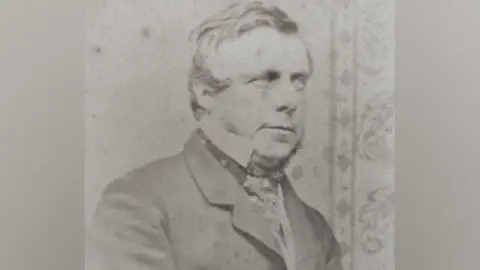 Pluck family
Pluck family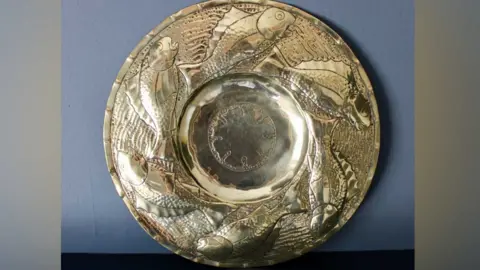 Dave Marshall
Dave MarshallCharlotte Woodley, the Pilgrim Trust curator at David Parr House, said: "Of course, the village still knows about it, but it has largely been forgotten from wider memory.
"And like the David Parr House, it's a working class story, involving more than 17 men from the village earning a very valuable second income."
Mr Marshall has traced some of the workers' details and it is hoped their descendants - and those of Miss Nash - will now be inspired to come forward with more information.
Mr Marshall said: "Without Bob Pluck saving the archive this history could have been lost forever."
 Pluck family
Pluck family
Find BBC News: East of England on Facebook, Instagram and Twitter. If you have a story suggestion email [email protected]
